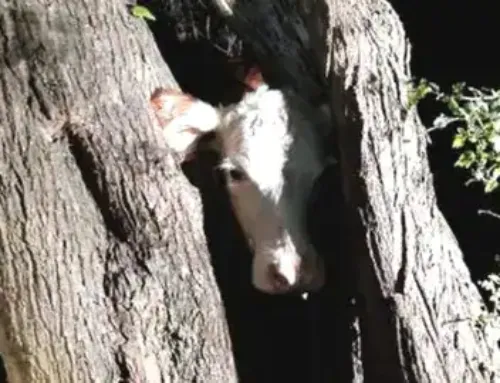 You set cameras and scout and look all of August, and locate a big 10-pointer and a couple of great 8s, any of which you’d love to tag this season. Will the bucks stay on the property and in the same general area come late September and October? Or will they go AWOL, never to be seen again this season?
You set cameras and scout and look all of August, and locate a big 10-pointer and a couple of great 8s, any of which you’d love to tag this season. Will the bucks stay on the property and in the same general area come late September and October? Or will they go AWOL, never to be seen again this season?
Tennessee researcher Bryan Kinkel has conducted extensive preseason censuses of the whitetails that live on his clients’ hunting lands across the Southeast. His observation data and trail-camera photos show that 50 percent of the older bucks may spend the spring/summer months at one end of their home range, but then shift to another core area for fall and winter. These seasonal ranges may have little or no overlap. His data shows these shifts most often occur around the time bucks shed their velvet–roughly September 5-20. So that furry-racked monster you spot in a bean field this weekend might be long gone when bow season opens.
How far might he go? Missouri biologist Grant Woods says it could be a few hundred yards or several miles or anywhere in between. If you hunt 1,000 acres or more, it’s no big deal. Most of the bucks that shift will still live in your zone, you just need to scout more after September 20 to pin them down.
The problem is when you hunt 50 to 300 acres, like most of us do. “On a 300-acre property, a buck that shifts only 500 yards or so could move right off your property and onto a spot where other people are hunting,” Woods says.
The good news: While half the mature bucks might leave your land in mid-September that many more that summered elsewhere are apt to move in and stay on your property this fall and winter. Generally a property sees a zero net loss of total bucks from summer to fall and winter, but the identity of those bucks can change dramatically.
So when you see a new a big buck pop up for the first time on one of your cameras in October or November, that explains it!
One more thing about buck movements, which could be good or bad news for you. “Our telemetry studies show that bucks range less as they get older and older, and their summer and fall/winter core areas overlap more,” says whitetail biologist Mickey Hellickson. So a buck that comes and goes off your land when he’s 3 ½ and 4½ might stop moving around so much if he lives to the ripe old age of 6, which is very rare for a wild buck. A really old buck might summer and winter in 100 acres on the property you hunt (good) or he might move off your land one August and never come back (bad).






This is very true. Through the years I’ve experienced this with frustration. My properties don’t have food plots to keep these big bucks around throughout the season.
One tactic I’ve been using the last say 5 years vigorously has been mock scrapes, I start them last week in July-1st week of August. Ill tear the ground on last year’s scrapes “Yes I use the same scrapes year after year”… I saturate scrape with scrape scent,buck scent, hang scent drippers…
The goal is to get these summer time bucks to establish one of my mock scrapes as his own. The tell tale sign I’ve accomplished this is once the buck or bucks sheds their velvet and I get him on trail cam actively hitting the scrape before he leaves town… Once this happens he’s hooked… This is no fool proof way of killing him but now I know he will come back to this site multiple times throughout the season… I’ve learned that mature bucks that establish a scrape just out of velvet, mid Sept. Will definitely be back hitting those scrapes at a minimum early December. Play your cards right early and late season but don’t forget around the rut too… When he loses his first doe after lock down a week he most likely will roam checking scrapes…
We end up with a fairly large net loss each Fall. But, our property is very unique during the summer months. (as Hanback has previously blogged) Over the last year, I have discovered where several of the bucks are going. There are 2 different properties which are approximately 3 miles and 5 miles from ours, both of which are very close to the river, and both of which have very low hunting pressure. Last year i saw a buck, ‘Long Brow’, on the evening on Sept 9th on my property, and a buddy had a trail cam picture of him a couple days later on the property 5 miles away. He ended up finding this bucks’ sheds last winter. The buck is back on my property and i have been getting pictures of him since June. He is an absolutely beautiful and perfect 8. So, if this deer holds the same pattern as last year, we will only have a couple days of bow season to try and put a tag on him. On the property that is about 3 miles away, a buddy had pictures of at least 3 of our mature bucks from last summer. Only 1 of them returned this summer. We know ‘Big 8’ was killed last fall. We don’t know what happened to ‘Big 9’. The other 8 that we called Fat Boy returned this summer. Huge body, not very impressive rack this year.